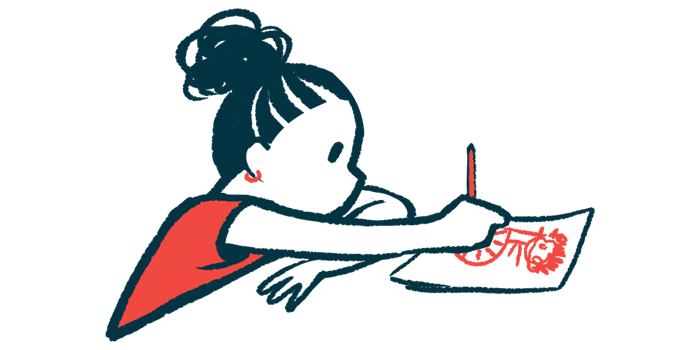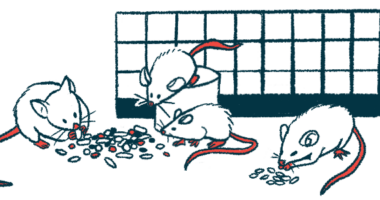School-age SMA children more independent on Spinraza: Study
Treatment shows improved motor function tied to reduced anxiety, depression

After Spinraza (nusinersen) treatment for slightly longer than one year, school-aged children with spinal muscular atrophy (SMA) showed improved motor function and more independence in tasks involving their arms and hands, a study from China has found.
These motor function improvements were linked to reduced symptoms of anxiety and depression, highlighting the impact of physical improvements on mental well-being, according to researchers.
“The findings of the present study provided preliminary insights into the multifaceted implications of [Spinraza] for improving independence and mental health in school-age SMA patients,” researchers wrote.
Their study, “Impact of nusinersen treatment on the independence and mental health of school-aged patients with spinal muscular atrophy,” was published in Pediatric Neurology.
Improvements noted in independence, emotional well-being
SMA is a genetic disorder that primarily affects motor neurons, the nerve cells that control voluntary muscle movement. When these neurons are damaged, they can no longer effectively transmit signals to the muscles, causing progressive muscle weakness and increased difficulty with movement over time.
Disease-modifying treatments for SMA have helped children achieve motor milestones that were previously out of reach, changing how they go about their daily lives.
Biogen’s Spinraza is approved for the treatment of children and adults with any of the main types of SMA. After an initial series of loading doses, Spinraza is administered directly into the spinal canal every four months. It works by increasing the production of functional SMN, the protein missing in SMA.
This study looked at how Spinraza helped school-age children improve their independence and emotional well-being. It involved 31 children — 18 boys and 13 girls — with a median age of 9.2 years. The children had been diagnosed with SMA type 2 or SMA type 3 at a median age of slightly older than 1 year.
Six of the children (19.4%) could walk at least 10 meters (about 33 feet) without assistance, so they were considered walkers. A total of 13 (42%) could sit by themselves, but couldn’t walk, and 12 (38.7%) could not sit at all. Treatment with Spinraza started a median of eight years after the onset of symptoms, the study noted.
To measure independence in children with SMA type 2 and non-walkers with SMA type 3 after 14 months of treatment with Spinraza, the researchers used the SMA Independence Scale-Upper Limb Module (SMAIS-ULM), which looks at upper limb function. In SMAIS-ULM, the maximum total score is 44, with higher scores indicating more independent use of the arms and hands for tasks such as grasping and manipulating objects.
Patients with increased functional improvement in the upper limbs are more competent in daily activities and social interaction.
Data from 25 children showed that the median SMAIS–ULM score significantly increased from 12 to 22 over 14 months of treatment.
“For school-age children, independence is a skill of vital importance that is related to learning, social interaction, and daily activities,” the researchers wrote, noting that “patients with increased functional improvement in the upper limbs are more competent in daily activities and social interaction.”
Anxiety, depression decrease in SMA children on Spinraza
To check for anxiety and depression, two questionnaires were used: the Screen for Child Anxiety-Related Emotional Disorders (SCARED) and the Depression Self-Rating Scale for Children (DSRSC). These questionnaires were completed by children older than 12. In both, higher scores indicate more severe symptoms.
With Spinraza, the percentage of children with a SCARED score of 25 or higher, indicating anxiety, decreased from 83.9% to 45.2%. The percentage of children with a DSRSC score of 15 or higher, indicating depression, also decreased, from 87.1% to 64.5%.
Motor function was assessed using two commonly used clinical tests: the Hammersmith Functional Motor Scale–Expanded (HFMSE) and the Revised Upper Limb Module (RULM). In both, higher scores indicate better motor function.
Over the course of treatment, HFMSE and RULM scores showed significant improvement. Increases in HFMSE scores were linked to higher SMAIS–ULM scores and lower percentages of children with anxiety or depression. Similarly, increases in RULM scores were also linked to more independence and less anxiety.
Overall, according to the researchers, these data revealed that Spinraza may have benefits beyond improved motor function — such as more independence in tasks involving the arms and hands. Children older than 12 also experienced better emotional well-being, with fewer symptoms of anxiety and depression, the data showed.
These findings suggest “independence and mental health as important [patient-reported outcomes] in school-age SMA patients [that] can be used as an important reference” to check the efficacy of treatment with Spinraza, the researchers wrote.








